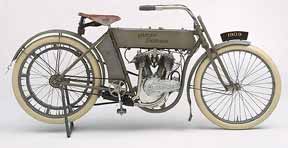 Established in 1903, the Harley-Davidson Motor Company grew rapidly during the two world wars. Foreign competition hit the industry early, and by 1953 Harley-Davidson was the last remaining major motorcycle manufacturer in the United States.
Established in 1903, the Harley-Davidson Motor Company grew rapidly during the two world wars. Foreign competition hit the industry early, and by 1953 Harley-Davidson was the last remaining major motorcycle manufacturer in the United States.
Harley was bought by AMF in 1969 and by the late 1970s they were on the block again, thanks to a sharp reduction in sales because of poor quality levels. In 1981, 13 Harley executives purchased the company from AMF, and an overall reduction in the motorcycle market drove additional production cuts.
The company almost went bankrupt in 1985, but CEO Richard Teerlink persuaded lenders to accept a restructuring plan that included the application of “Japanese management principles,” in effect the Toyota Production System or lean manufacturing. A temporary and reducing tariff on large imported motorcycles created a brief time window for the turnaround.
…
Add new comment